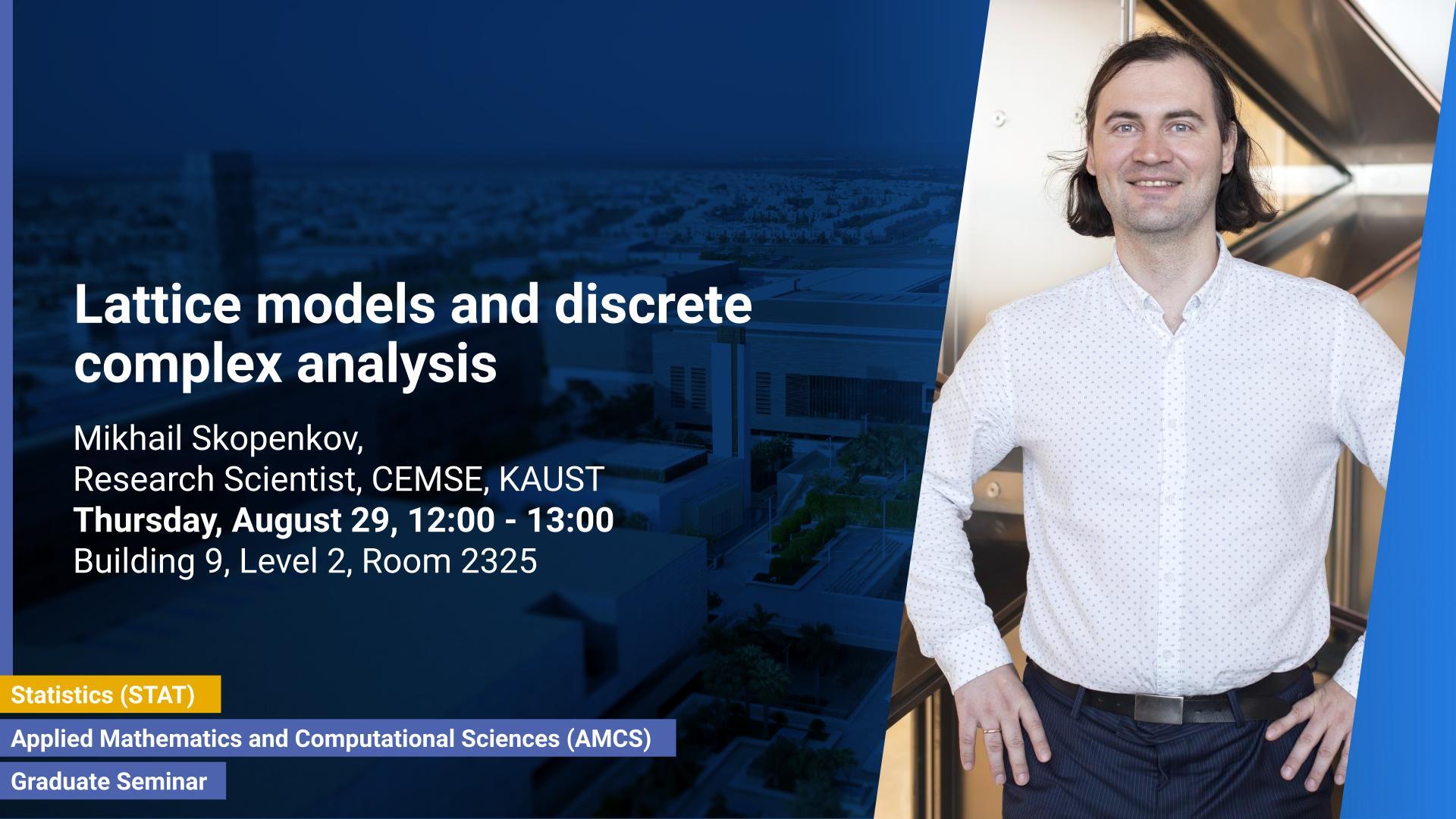Abstract
Lattice models are widely used to study various statistical and quantum physics phenomena. For instance, to model fluid percolation, one takes a part of a honeycomb lattice inside a fixed rectangle and a random coloring of the hexagons into two colors, blue and yellow. A typical question is then to find the probability of a blue path between opposite sides of the rectangle as the hexagons become smaller and smaller.
A formula for the probability was found by John Cardy (Breakthrough Prize in Fundamental Physics laureate 2024) and proved mathematically by Stanislav Smirnov (Fields medalist 2010) employing conformal mappings and discrete complex analysis. The link between the latter was the convergence of discrete analytic functions to their continuum analogs as the lattice becomes finer and finer. This has made a revolution in statistical physics in the last 25 years.
We introduce a new percolation formula, generalizing the known ones by John Cardy and Oded Schramm. We also establish general convergence theorems for discrete analytic functions in planar domains and Riemann surfaces.
The talk is elementary, and no background in lattice models or discrete complex analysis is assumed. It is based on joint works with Alexander Bobenko, Mikhail Khristoforov, Stanislav Smirnov, and Alexey Ustinov.
Brief Biography
Mikhail Skopenkov is a research scientist at the CEMSE Division at King Abdullah University of Science and Technology and an associate professor at HSE University. He earned a master's and doctorate from Lomonosov Moscow State University and a habilitation from HSE University. His research is on the border between discrete and continuous mathematics, including mathematical physics, geometry, and topology. He has published 24 research papers, 9 pedagogical ones, and 4 books.

